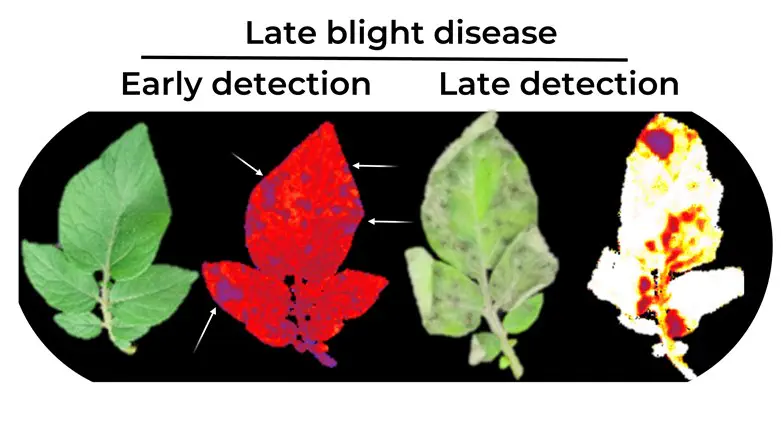
In a new study recently published in The Plant Journal, researchers at Hebrew University’s Faculty of Agriculture, Food and Environment utilized a new molecular sensor system capable of entering plant cells and identifying potential diseases.
With potatoes playing a crucial role in global food security, researchers worked on developing a method to enable early detection of late blight infections. This disease, which is a leading cause of potato and tomato crop loss, results in an estimated $6.5 billion in damages to produce worldwide each year. The study was led by doctoral student Matanel Hipsch under the supervision of Dr. Shilo Rosenwasser, senior lecturer and assistant professor at the Robert H Smith Faculty of Agriculture, Food and Environment.
Dr. Rosenwasser explained that, "The development of advanced biotechnological tools for the early detection of plant diseases can lead to a future research breakthrough in understanding the pathogenicity process, thereby improving food security by minimizing damages to global agriculture."
This new method enables early detection of various harmful diseases in the plant leaves with the help of a simple and harmless external scan. Using genetic engineering methods, the researchers produced new varieties of potatoes that produce special proteins that are sent to different regions of the plant cells. As part of the process, the protein acts as a unique biological sensor that can be sent, for example, to the chloroplasts in the plant's cells, where photosynthesis occurs.
"In its early stages, it is difficult to identify the disease since no external signs can be seen on the leaf," explained doctoral student Matanel Hipsch. "In our previous study, we saw that using molecular sensors within the biological systems of potatoes is particularly effective in identifying stress conditions even before plant damage has been caused."
By using sensitive cameras that can pick up the signals sent from the sensor, they were able to obtain spatial information at the level of the entire plant. According to the researchers, the images produced by the cameras helped monitor the plant's physiological state throughout the development of late blight in the potato.
The research findings revealed that the use of protein as a biological sensor was able to detect the diseased areas of the leaves even during the first invisible stages. These findings also led the researchers to collaborate with Dr. David Helman from the university’s Department of Soil and Water Sciences to develop an AI-based algorithm capable of analyzing the fluorescent images and distinguishing between healthy leaves and infected leaves.
Hipsch pointed out, "We have seen that plants infected with late blight cause the protein to emerge from the chloroplast and accumulate outside of it. This output caused a change in the fluorescent properties of the protein, which helped to identify the points of penetration of the pathogen into the leaf."
One of the most fascinating findings suggests that the areas infected with late blight are characterized by higher photosynthetic activity compared to the rest of the leaf. The researchers explained that these results indicate how the pathogen maintains and even improves leaf productivity in the early stages of the disease to 'disguise' its development in the plant.
According to the team, the new method can be used for in-depth study of the mechanisms of resistance to late blight, as well as for scanning and detecting potential substances that will improve the resistance of plants.
